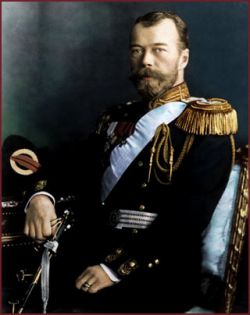Tsarist Government is understood as the type of absolutist government, in which the Tsar was the greatest exponent. In other words, all the military, economic and political power dominated it, coming to have more power than the church or the wealthy of the time. Originated under the command of Ivan III (1440-1505) and ended during The Russian Revolution in 1917, where Nicolas II, the last Tsar and his entire family are killed. Tsarism was the type of government that ruled in Russia from the 15th to the 20th century.

Characteristics
The maximum authority was the Tsar, possessed absolute authority, all state powers were by default belonging to the Tsar. The Tsar could empower other people, acting on his behalf, by his orders and that whatever he does remains within the provisions of the law. This ideology was looking for a supposed benefit for Russia. He compared the tsar as a father and the people as his children.
The tsar was the highest entity of the church also being the tsar synonymous with God’s chosen. This led to a very strong relationship of the royal family with religion and high religious positions. Another characteristic is the domain of the greater amount of land, properties and industries than the monarchs of that time.
Slope
The Tsarist government would begin its decline from 1905. A peaceful protest was held early in the year to indicate to the Tsar some changes that the workers and the farmers were asking for, the march was led by the priest Georgi Gapon. This march would have been completely peaceful and without an image of a political party.
The immediate response against the march were shots of the Russian infantry leaving more than two thousand dead and an indefinite number of wounded. This repression made the movements of the workers and peasants more arduous. Work strikes were carried out in different areas (student, communication, transportation, etc.).
This dissatisfaction is increased by the constant defeats of the war against Japan and massacres after it, giving a much greater disagreement. Before a possible attempt against the life of the Tsar, this dissipates the important political parties that were against the Tsarisms and banishes their greatest symbols. Which would only delay an inevitable act that would take place in 1917. the Russian revolution that takes place on October 1917 led by Lenin. Which manages to dismantle the Tsar’s family, riddling the entire royal family. Thus giving the end of the tsarist government.